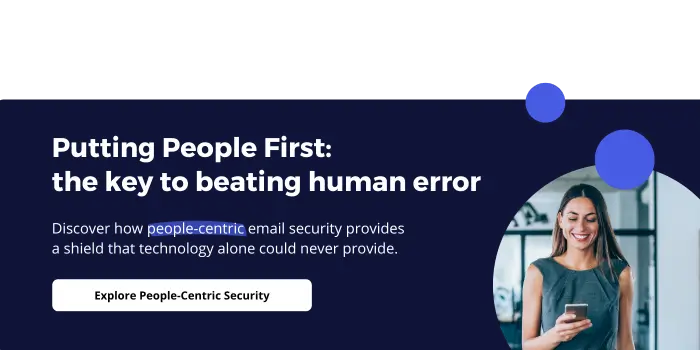Mistakes can happen any time: carelessness, fatigue, not watching your step when rushing to get home... We've all definitely bumped a hip into a pointy table corner. Some mistakes however, have bigger consequences than others, like sharing your data with the wrong people.
In this blog post, we'll delve into the importance of awareness in preventing data breaches and what awareness looks like in a secure email solution.
The human element in email security
We live in a world where communication is fast and convenient. Applications like WhatsApp and email have revolutionized the way we connect with others, but they also bring security risks. Email, in particular, is a common tool for both personal and professional correspondence. It offers speed and efficiency, but it can also be a risky platform when it comes to safeguarding sensitive information.

The ease with which we share data simply poses security risks. Whether you're sending a birthday greeting or a confidential contract, the process is essentially the same. The only difference is the content's sensitivity. This leaves room for errors, where you might accidentally share confidential data with someone who wasn't meant to see it.
We're prone to mistakes, lapses in judgment, and the occasional slip in attention. The General Data Protection Regulation (GDPR) and other data protection laws have strict penalties for organizations that fail to protect sensitive information. Accidentally sharing data with the wrong person can have serious consequences, and it's usually because someone wasn't paying enough attention or due to lack of awareness.
It's time for action!
The ever-present threat of phishing
Phishing attacks, a prevalent email-based threat, capitalize on human psychology and vulnerability. Cybercriminals cleverly impersonate trusted entities to manipulate recipients into divulging confidential information. These scams prey on human emotions like fear, curiosity, and urgency, making it essential for individuals to be vigilant and aware of potential red flags.
Data Breaches due to human errors
Data breaches, often resulting from human errors, are a persistent threat in the digital landscape. Mistakes can occur at any time, whether due to carelessness, distraction, or simply not double-checking recipient addresses. In many cases, these errors lead to unintentional data leaks, which can have severe legal and financial implications for organizations.
Increase awareness, reduce the risk of mistakes
The truth is, we are all human, and we all have moments when we are not at our sharpest. Fatigue, distractions, or even just the desire to rush through our tasks can lead to careless mistakes. As organizations, it's crucial that we reduce the chances of these errors occurring. After all, our employees are the first line of defense when it comes to data security.
The good news is that you can enhance awareness and reduce the risk of mistakes without disrupting your workflow. Businesses often worry about the time and effort required to implement new security features. However, solutions have come a long way, and the most important feature you can look for is one that increases user awareness. It equips individuals with the knowledge and vigilance necessary to recognize threats, prevent errors, and react swiftly to potential breaches.
Awareness in a secure email solution that prevents accidental misdirected emails involves a combination of user education, user-friendly features, and technical measures. Here's what awareness looks like in such a solution:
- User training and education: Users are provided with ongoing training and education on email security best practices. This includes understanding the importance of securing sensitive data, double-checking recipients, verifying attachments, and recognizing potentially sensitive information. Training should also cover recognizing phishing attempts and other social engineering tactics that can lead to misdirected emails or data breaches.
- Sensitive data detection: Labels or tags that alert the users when sensitive data is detected, such as Social Security numbers, credit card information, or patient data in the documents attached. This visual cue reminds users to be extra cautious and to ensure the data is sent to the right person and with the right level of security. Some email security solutions like Smartlockr can also apply the right security automatically when sensitive data is found, so users get a helping hand.
- Recipient and file verification: Secure email solutions can include features that prompt users to confirm the intended recipients and attachments before sending an email. This extra layer of verification helps prevent accidental misdirection.
- AI and Machine Learning: Some secure email solutions employ AI and machine learning algorithms to analyze user behavior. They can identify patterns and detect anomalies, alerting users to potential misdirected emails based on context.
- Recall a sent email: The system can offer users the ability to recall a sent email after hitting the "send" button, allowing them to correct mistakes.
- Admin logs: Audit trails and reporting capabilities that allow administrators to track and monitor email activities. This can help identify any patterns or incidents of misdirected emails, enabling organizations to take corrective actions and further raise awareness among users.
In a comprehensive secure email solution, awareness is embedded in the user experience and the technology itself. It combines user training and reminders with proactive system features that guide users toward secure email practices, ultimately reducing the risk of accidental misdirected emails and data breaches. This multi-layered approach ensures that users are constantly mindful of the potential risks associated with email communication and that the technology actively supports their efforts to maintain email security.
We believe in "Prevention is better than cure"!

